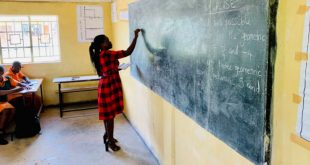The other indicators are environment and self-censorship which analyses the environment in which news and information providers operate, the legislative framework which measures the impact of the legislative framework governing news and information activities, transparency which measures the transparency of the institutions and procedures that affect the production of news and information, and infrastructure which measures the quality of the infrastructure that supports the production of news and information.
The seventh indicator is based on data gathered about abuses and acts of violence against journalists and media during the period evaluated. Here, the abuses indicator measures the level of abuses and violence.
Each indicator is given a score between 0 and 100. A team of specialists, each assigned to a different geographical region, keeps a detailed tally of abuses and violence against journalists and media outlets. These researchers also rely on a network of correspondents in 130 countries.
The Abuses indicator for each country is calculated on the basis of the data about the intensity of abuses and violence against media actors during the period evaluated. This quantitative indicator is then used to weight the qualitative analysis of the situation in the country based on the replies to the questionnaires.
Ever since the 2013 index, countries have been given scores ranging from 0 to 100, with 0 being the best possible score and 100 the worst. This makes the Index more informative and makes it easier to compare one year with another.
The report calculates two scores. The first, is based on the first six of the seven indicators listed above. The second combines the first six indicators with the seventh (abuses).
A country’s final score is the greater of these two scores. This method prevents an inappropriately low score (high ranking) being given to a country where few or no acts of violence against journalists take place because the provision of news and information is tightly controlled.
Signs of worse future
Each annual report has a theme. This year it is ““Entering a decisive decade for journalism, exacerbated by coronavirus”. The compilers of the report say happening is 2020 show that the coming decade will be decisive for the future of journalism, with the Covid-19 pandemic highlighting and amplifying the many crises that threaten the right to freely reported, independent, diverse and reliable information.
They suggest that the next ten years will be pivotal for press freedom because of converging crises affecting the future of journalism: a geopolitical crisis (due to the aggressiveness of authoritarian regimes); a technological crisis (due to a lack of democratic guarantees); a democratic crisis (due to polarisation and repressive policies); a crisis of trust (due to suspicion and even hatred of the media); and an economic crisis (impoverishing quality journalism).
“We are entering a decisive decade for journalism linked to crises that affect its future,” says RSF secretary-general Christophe Deloire, “The coronavirus pandemic illustrates the negative factors threatening the right to reliable information, and is itself an exacerbating factor. What will freedom of information, pluralism and reliability look like in 2030? The answer to that question is being determined today.”
There is a clear correlation between suppression of media freedom in response to the coronavirus pandemic, and a country’s ranking in the Index. Both China (177th) and Iran (down 3 at 173rd) censored their major coronavirus outbreaks extensively. In Iraq (down 6 at 162nd), the authorities stripped Reuters of its licence for three months after it published a story questioning official coronavirus figures.
“The public health crisis provides authoritarian governments with an opportunity to implement the notorious “shock doctrine” – to take advantage of the fact that politics are on hold, the public is stunned and protests are out of the question, in order to impose measures that would be impossible in normal times,” Deloire added. “For this decisive decade to not be a disastrous one, people of goodwill, whoever they are, must campaign for journalists to be able to fulfil their role as society’s trusted third parties, which means they must have the capacity to do so.”
Press freedom remains highly fragile in sub-Saharan Africa. The fall of several dictators and authoritarian governments in recent years in countries such as Angola (up three at 106th), Ethiopia (up 11 at 99th), Gambia (up five at 87th), the Democratic Republic of Congo (DRC) (up 4 at 150th), Sudan (up 16 at 159th) and Zimbabwe (up one at 126th), has loosened the noose on journalists in these countries.
The report says profound changes are needed to allow high-quality, free and independent journalism to flourish.
****
CLICK TO READ ONLINE MAGAZINE HERE
 The Independent Uganda: You get the Truth we Pay the Price
The Independent Uganda: You get the Truth we Pay the Price



